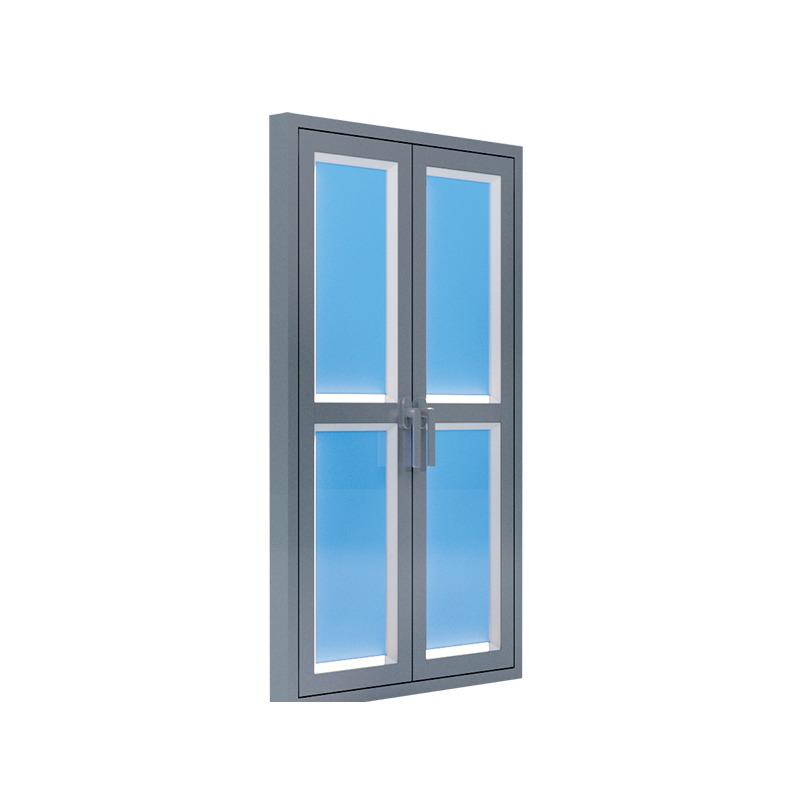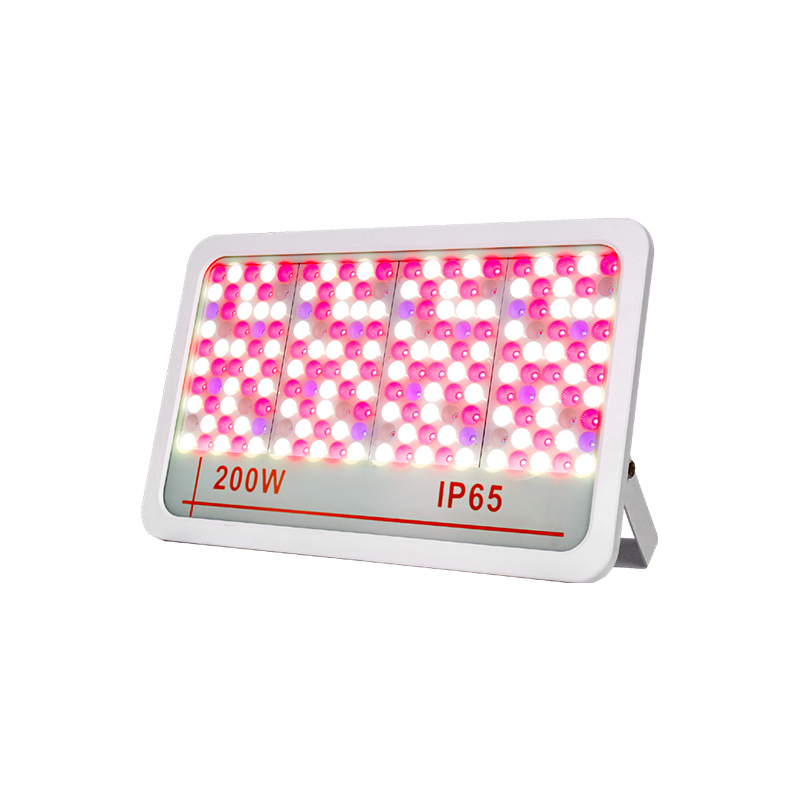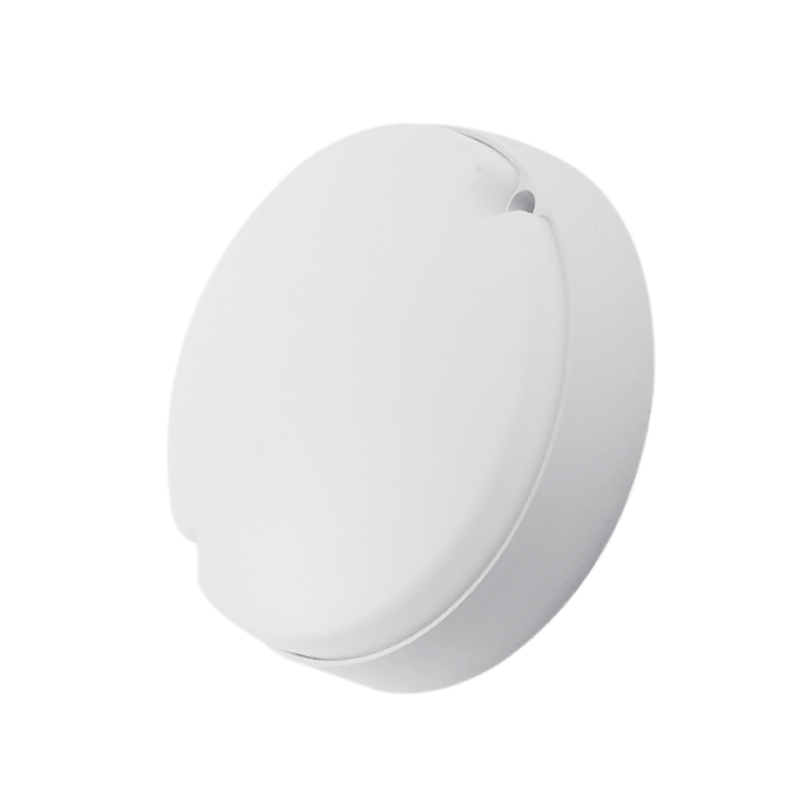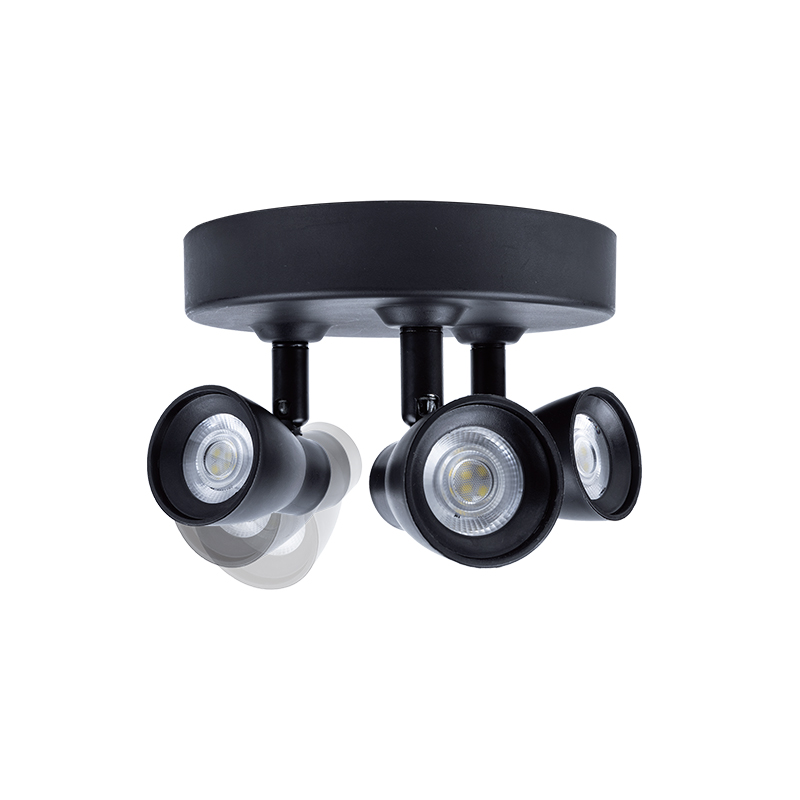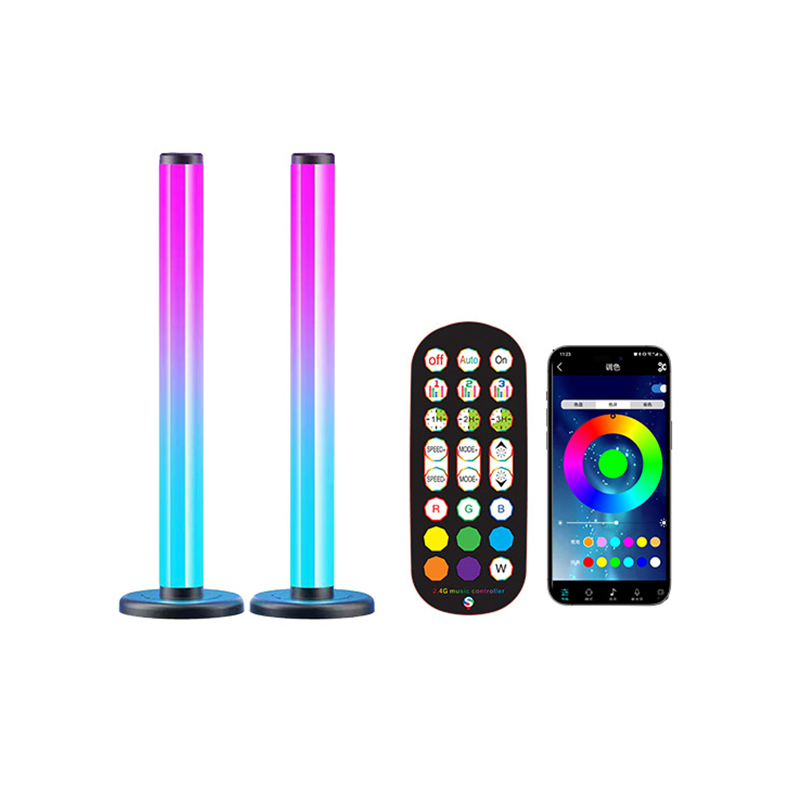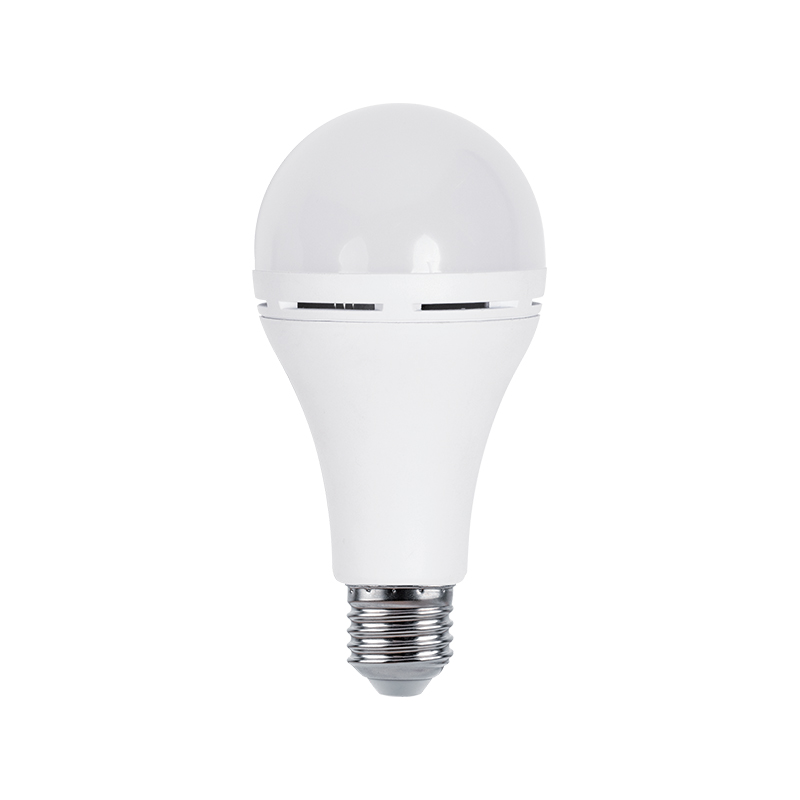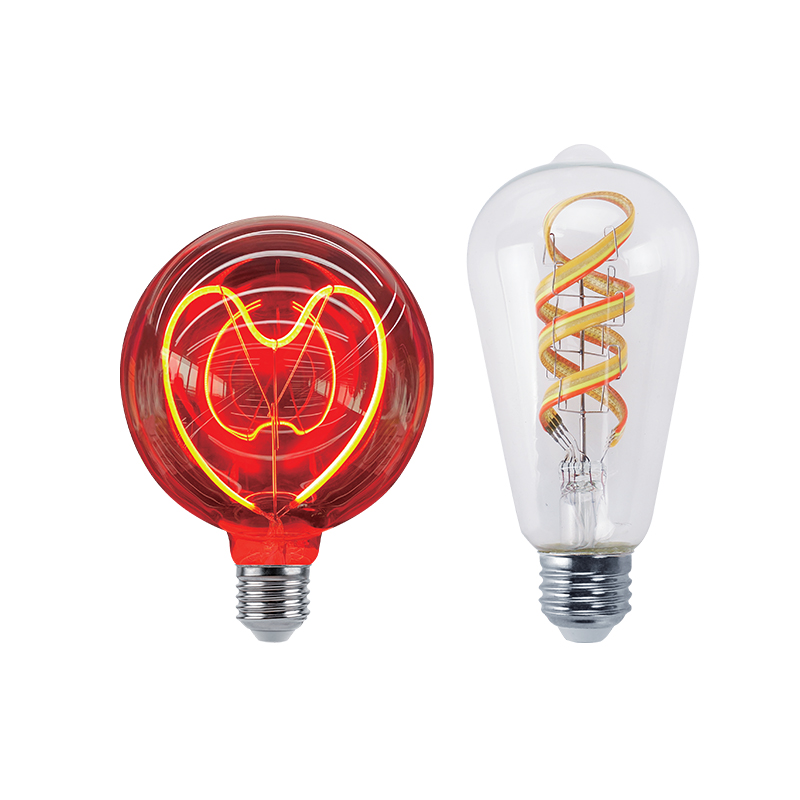We sincerely look forward to establishing a long-term development partnership with you with good quality and professional services.
Core technology analysis: 26-color RGB light mixing system and Ra80 high color rendering performance
In the field of modern intelligent lighting, desktop atmosphere lights are becoming an important device for improving the quality of work and life with their unique functions and designs. Among them, the 26-color RGB light mixing system and Ra80 high color rendering performance as core technologies play a decisive role in the color presentation and visual experience of the light.
1.Principles and advantages of the 26-color RGB light mixing system
The RGB (red, green, blue) light mixing system is a technology that achieves rich color output by mixing the three primary colors of red, green and blue with different intensities. The 26-color RGB light mixing system is not a simple fixed 26 colors, but by precisely controlling the intensity ratio of the three primary colors, it can theoretically present millions of different colors, bringing users a variety of color choices.
The system uses advanced PWM (pulse width modulation) dimming technology to achieve precise control of the intensity of each primary color light. By adjusting the duty cycle of the PWM signal, the brightness of the light can be smoothly adjusted without changing the color characteristics of the light. This dimming method can not only avoid the flicker problem that may be caused by traditional dimming technology, but also ensure that the color performance of the light is still stable and accurate at different brightness.
The advantage of the 26-color RGB mixed light system lies in its high flexibility and customization. Users can freely adjust the color and brightness of the light according to their preferences and needs to create an atmosphere suitable for different scenes. For example, in office scenes, users can choose cold-toned lights to improve work efficiency; in leisure and entertainment scenes, they can choose warm-toned or colorful lights to enhance the fun and comfort of the atmosphere.
2.Balance between color reproduction and visual comfort
Color reproduction is one of the important indicators for measuring light quality. It reflects the ability of light to reproduce the true color of an object. Ra80 high color rendering performance means that the color rendering index of the desktop atmosphere light reaches 80 or above, which can accurately restore the color of the object, so that the object appears closer to the real color under the light. However, while pursuing high color reproduction, visual comfort also needs to be considered.
Excessive color saturation and brightness may irritate the human eye and cause visual fatigue. Therefore, when designing desktop atmosphere lights, it is necessary to achieve a balance between color reproduction and visual comfort through algorithm and hardware optimization. On the one hand, the saturation of some overly bright colors can be reduced by adjusting the ratio of RGB mixed light to make the light softer; on the other hand, intelligent dimming technology can be used to automatically adjust the brightness of the light according to the ambient light and the user's usage time to reduce the burden on the human eye.
In addition, visual comfort can also be improved by adjusting the color temperature. Lights with different color temperatures will give people different visual feelings. For example, warm light with low color temperature will make people feel warm and relaxed, while cold light with high color temperature will make people feel awake and focused. Desktop atmosphere lights can provide a variety of color temperature options according to different usage scenarios and user needs, so that users can enjoy high color reproduction while also getting a comfortable visual experience.
3.The impact of professional color rendering index (CRI) on the working environment
The professional color rendering index (CRI) plays an important role in the working environment. For people who need to perform color-sensitive work, such as designers, photographers, artists, etc., lights with high color rendering index can ensure that they can accurately judge and process colors. Under low CRI lights, the color of objects may deviate, resulting in work results that are inconsistent with actual expectations.
In an office environment, high CRI desktop atmosphere lights can improve employee work efficiency and work quality. Studies have shown that good lighting conditions can improve employee mood and concentration, reduce visual fatigue and error rates. When employees work under high CRI lights, they can see documents, screens and other work content more clearly, thereby improving work accuracy and efficiency.
In addition, high CRI lights can also improve the atmosphere of the work environment. Bright, clear lights can make the office look more tidy and professional, and improve employees' job satisfaction and sense of belonging. By reasonably setting the color and brightness of the desktop atmosphere lights, you can also create different work atmospheres to meet the needs of different work scenarios.
Intelligent Control Solutions: Cross-Platform Compatibility Testing (Tuya/Alexa/Google Home)
With the continuous development of smart home technology, the intelligent control function of desktop atmosphere lights has become one of their important competitive advantages. Cross-platform compatibility, especially compatibility with mainstream smart home platforms such as Tuya, Alexa, and Google Home, can bring users a more convenient and diversified control experience.
1.Wi-Fi Connection Stability Testing
Wi-Fi connection is the basis for realizing the intelligent control of desktop atmosphere lights. A stable Wi-Fi connection can ensure that users can accurately and promptly control the lights through mobile apps or voice assistants. In the testing of the Wi-Fi connection stability of desktop atmosphere lights, we evaluated multiple aspects such as signal strength, anti-interference ability, and connection speed.
In terms of signal strength, the test results show that when the distance from the router is within 10 meters and there are no obstacles, the desktop atmosphere light can maintain a strong signal strength, and the control response is rapid. However, when the distance increases to 15 meters or there are obstacles such as walls, the signal strength will decrease, and occasional control delays may occur. To improve this situation, some desktop atmosphere lights adopt dual-band Wi-Fi technology, supporting both 2.4GHz and 5GHz frequency bands. The 2.4GHz frequency band has better wall-penetrating ability and is suitable for environments with a longer distance or obstacles; the 5GHz frequency band has higher transmission speed and stability and is suitable for short-distance high-speed data transmission.
In the anti-interference ability test, we simulated various complex wireless environments, such as multiple Wi-Fi devices working simultaneously and Bluetooth device interference. The results show that desktop atmosphere lights with advanced wireless communication technology can effectively resist interference and maintain a stable connection. These devices usually adopt technologies such as automatic channel selection and interference avoidance, which can automatically detect the surrounding wireless environment, select the optimal channel for communication, and avoid interference with other devices.
Connection speed is also an important indicator for measuring the stability of Wi-Fi connections. Through testing, most desktop atmosphere lights take about 10 - 15 seconds to complete pairing and setup during the first connection. In subsequent use, the reconnection speed is significantly faster, generally completing the connection within 3 - 5 seconds, which can meet the needs of users for quickly controlling the lights.
2.Collaborative Working Logic of Mobile App and Voice Control
Mobile apps and voice control are the two most commonly used intelligent control methods for desktop atmosphere lights. The collaborative working logic between them can provide users with a more seamless and convenient control experience.
Mobile apps usually have rich functions and setting options. Users can adjust the color, brightness, and color temperature of the lights through the app, set timed on/off, scene modes, etc. The app can also display the status of the lights in real-time, making it convenient for users to understand the working status of the lights at any time. When collaborating with voice control, the app can serve as a supplement and extension to voice control. When users cannot accurately achieve certain complex settings through voice commands, they can make detailed adjustments through the app.
Voice control, on the other hand, brings users a more convenient and natural interaction method. Users can control the lights simply by voice commands, such as "Turn on the atmosphere light," "Change the light to blue," "Adjust the brightness to 50%," etc. Currently, desktop atmosphere lights support connection with mainstream voice assistants such as Alexa and Google Home. These voice assistants can accurately understand users' voice commands through natural language processing technology and transmit the commands to the desktop atmosphere lights for execution.
The collaborative work of mobile apps and voice control is also reflected in scene linkage. Users can set different scene modes in the app, such as "Work Mode," "Entertainment Mode," "Sleep Mode," etc., and associate corresponding voice commands with each scene mode. When users issue specific voice commands, the desktop atmosphere lights will automatically switch to the corresponding scene mode, achieving intelligent linkage between the lights and the scene.
3.Cross-Platform Compatibility Testing (Tuya/Alexa/Google Home)
To verify the cross-platform compatibility of desktop atmosphere lights, we conducted actual tests on their connection and control with platforms such as Tuya, Alexa, and Google Home.
In the connection test with the Tuya platform, we found that the desktop atmosphere light could quickly and stably access the Tuya smart home ecosystem. Through the Tuya app, users can conveniently perform various settings and controls on the lights, and can also link the lights with other Tuya smart devices to achieve more intelligent home scene control. For example, users can set that when the smart door lock detects someone coming home, the desktop atmosphere light automatically turns on and adjusts to the appropriate brightness and color.
The connection tests with Alexa and Google Home also achieved good results. After completing the device pairing, users can control the desktop atmosphere lights using English or other supported languages through the Alexa or Google Home voice assistants. Whether it is simple on/off operations or complex color and brightness adjustments, the voice assistants can accurately recognize the commands and execute them. At the same time, desktop atmosphere lights also support integration with the smart home scene functions of Alexa and Google Home. Users can incorporate the lights into custom smart home scenes to achieve a more convenient intelligent control experience.
Energy Efficiency and Power Supply Design: USB Power Supply Architecture and LED Energy - Saving Technology
In the context of the era advocating energy conservation and environmental protection, the energy efficiency and power supply design of desktop atmosphere lights are of crucial importance. The application of the USB power supply architecture and LED energy - saving technology not only endows desktop atmosphere lights with a convenient power supply method but also significantly reduces energy consumption, achieving the goal of high - efficiency energy conservation.
1.Advantages and Characteristics of the USB Power Supply Architecture
The USB (Universal Serial Bus) power supply architecture, with its versatility and convenience, has become a common power supply method for desktop atmosphere lights. USB interfaces are widely present in various electronic devices, such as computers, power banks, USB chargers, etc. This enables desktop atmosphere lights to be easily connected to different power supply devices, greatly enhancing the flexibility of use.
From a physical structure perspective, USB interfaces adopt a standardized design with unified specifications and pin definitions. Common USB interfaces include Type - A, Type - B, Micro - USB, and Type - C. Among them, the Type - C interface has gradually become the preferred interface for the new generation of desktop atmosphere lights due to its features such as support for reversible insertion, fast transmission speed, and strong power supply capability. This standardized design not only facilitates users in connecting devices but also reduces the design and manufacturing costs for manufacturers.
In terms of power supply capacity, the power supply standards of USB interfaces have been continuously evolving. The early USB 2.0 interface usually provides a voltage of 5V and a current of 500mA, with a power of 2.5W. However, USB 3.0 and higher - version interfaces, when using specific protocols, can provide a voltage of up to 20V and a current of 5A, with a power of 100W. For desktop atmosphere lights, generally, only a relatively low power is required for normal operation, and the common power range is between 2 - 5W. Therefore, the power supply capacity of USB interfaces can fully meet their needs. In addition, the USB power supply architecture also has functions such as over - current protection and over - voltage protection, which can effectively ensure the safety of devices and users.
2.Principle and Application of LED Energy - Saving Technology
LED (Light - Emitting Diode), as a semiconductor light - emitting device, its energy - saving principle is based on a unique light - emitting mechanism. Traditional incandescent bulbs emit light by heating the filament with an electric current. In this process, most of the electrical energy is converted into heat energy, and only a small part is converted into light energy, resulting in low energy efficiency. In contrast, LED lights utilize the electroluminescence effect of the semiconductor PN junction. When an electric current passes through the PN junction, electrons and holes recombine to release energy, directly emitting light in the form of photons, reducing heat energy loss and greatly improving the efficiency of converting electrical energy into light energy.
The LED chips used in modern desktop atmosphere lights are continuously optimized in terms of materials and processes. For example, LED chips made of new semiconductor materials such as gallium nitride (GaN) have higher luminous efficiency and stability. At the same time, through optimizing the chip packaging process, such as using flip - chip technology and phosphor coating technology, the luminous efficiency and color rendering performance of LED lights are further improved. In addition, LED lights also have the characteristic of a long lifespan. Generally, the service life of LED lights can reach 20,000 - 50,000 hours, much longer than that of traditional incandescent bulbs and fluorescent lamps, reducing the frequency and cost of replacing lamps.
In practical applications, desktop atmosphere lights achieve energy conservation by controlling the number of lit LED lights, brightness, and operating time. For example, when users do not need high - brightness lighting, they can reduce the operating current of the LED lights by adjusting the light brightness, thereby reducing energy consumption. When the lights are not in use, unnecessary long - term operation can be avoided by setting a timed - off function.
3.Performance in Low - Power Mode
The low - power mode is an important function designed for desktop atmosphere lights to further reduce energy consumption. In the low - power mode, desktop atmosphere lights achieve a significant reduction in energy consumption by reducing the operating frequency of LED lights and minimizing the power consumption of the chips.
In terms of lighting effects, although the brightness of the lights will decrease in the low - power mode, it can still meet some basic lighting needs, such as dim lighting at night and creating a soft atmosphere. For example, when resting at night, setting the desktop atmosphere light to the low - power mode allows it to emit a faint light, which will not affect sleep and can provide a certain amount of illumination, facilitating users to move around in the dark.
In terms of energy consumption, through actual testing, after turning on the low - power mode, the power consumption of desktop atmosphere lights can be reduced to 30% - 50% of that in the normal mode. Taking a desktop atmosphere light with a normal power of 5W as an example, in the low - power mode, its power can be reduced to 1.5 - 2.5W. If the low - power mode is used for 8 hours a day, compared with the normal mode, it can save approximately 0.72 - 1.2 kWh of electricity per month. Over the long term, the energy - saving effect is very significant.
In addition, the low - power mode also has a positive effect on extending the service life of the device. Since the workload of LED lights and other electronic components is reduced in the low - power mode, heat generation is decreased, thereby reducing the aging rate of the components and improving the stability and reliability of the device.
4.Suggestions for Multi - Device Power Supply Compatibility
With the increasing number of electronic devices, users often face the situation of powering multiple devices simultaneously when using desktop atmosphere lights. To ensure the stability and safety of power supply, the following are some suggestions for multi - device power supply compatibility.
Firstly, choose a suitable USB charger or power bank. A USB charger or power bank with sufficient output power and reliable quality should be selected. For example, if it is necessary to power the desktop atmosphere light and other devices with relatively high power (such as tablets, mobile phones, etc.) simultaneously, a charger or power bank that supports fast - charging protocols and has an output power of more than 30W should be chosen. At the same time, pay attention to the compatibility of the charger or power bank to ensure that it supports the power supply protocols and voltage and current specifications required by the desktop atmosphere light.
Secondly, allocate USB interfaces reasonably. If using a multi - port USB charger or USB hub, the interfaces should be allocated reasonably according to the power requirements of the devices. Connect devices with higher power to interfaces with larger output power, and connect devices with lower power such as desktop atmosphere lights to interfaces with relatively smaller output power to avoid insufficient power supply to some devices due to unreasonable interface allocation.
Finally, pay attention to the power supply environment. When powering multiple devices, ensure the stability of the power supply environment and avoid using it in an environment with large voltage fluctuations or instability. At the same time, regularly check whether the USB interfaces and connection cables are damaged, and replace aging or damaged components in a timely manner to prevent problems such as poor contact or short - circuit from affecting the normal use and safety of the devices.

 English
English Español
Español Deutsch
Deutsch